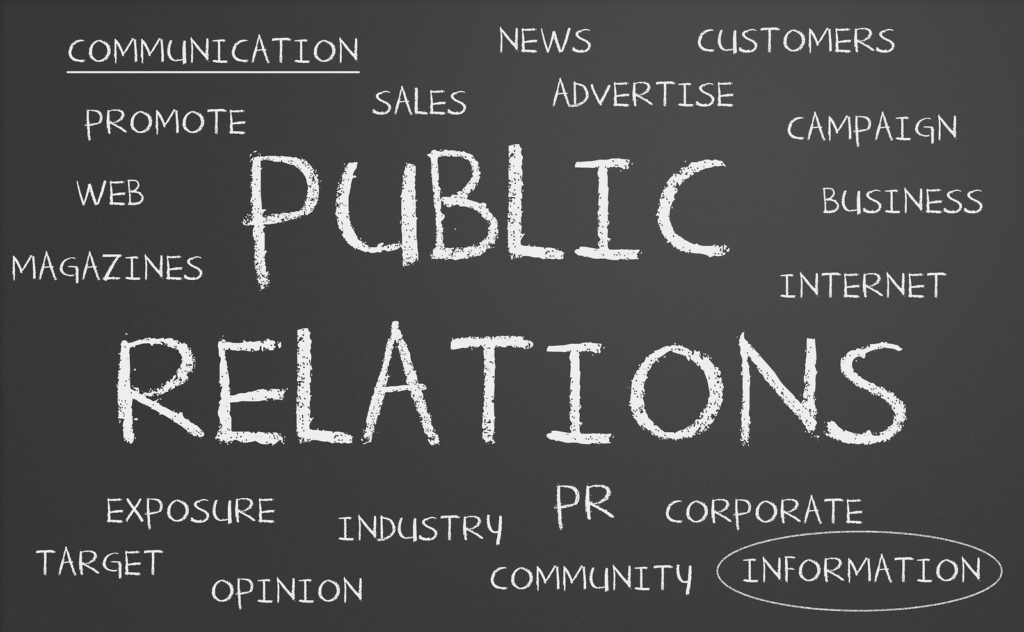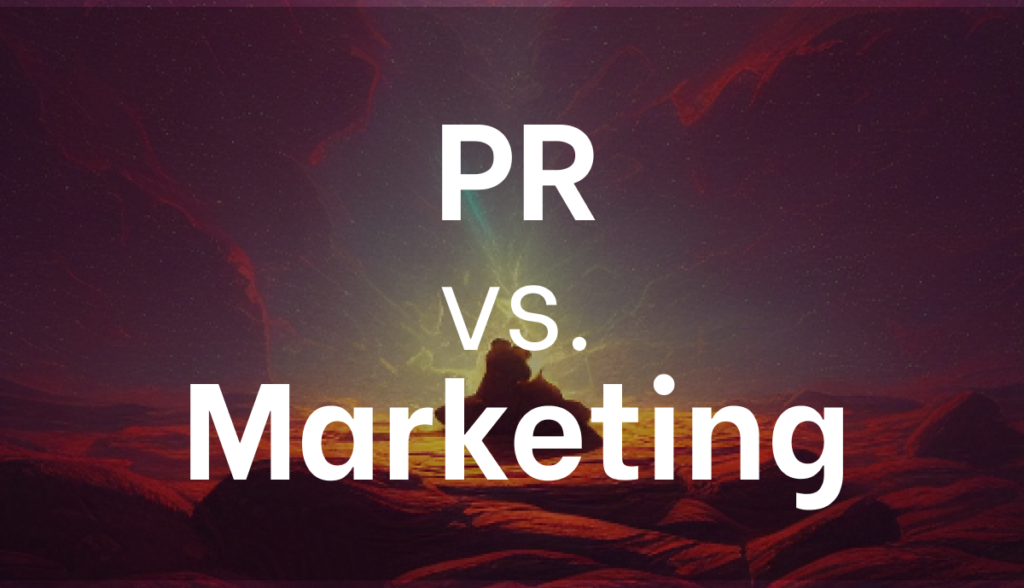If you are in the business world, then it is important to be aware of the differences between PR and marketing. PR and marketing are both integral parts of any successful business. Both often aim to increase brand awareness and visibility, but they do so in very distinct ways.
Marketing is focused on building a brand’s reputation, attracting new customers, and developing a relationship with current customers. It involves creating campaigns and content that will reach the right audiences and increase sales.
On the other hand, PR focuses more on maintaining the brand’s image by providing strategic communication to ensure the public views them in a positive light. It also involves managing crises, responding to media enquiries, pitching stories to news outlets, and securing interviews with experts or industry influencers.
In this article, we will explore these two topics in more detail and explain how you can use them both most effectively for your business.
What Is PR and What Is Marketing?

One way to think of the difference between Public Relations (PR) and Marketing is to consider what each field is trying to achieve. PR focuses on building relationships with key stakeholders or ‘influencers’, whereas marketing is focused on promoting the brand’s products and services.
When it comes to PR, you’re creating content that helps earn coverage from industry magazines, websites and other sources of media. It could be through press releases, speaking engagements, attending events or networking with industry contacts. The point is getting your message noticed by important people in the industry that have the potential to have an impact on your business.
Marketing, on the other hand, is about getting your message out there through channels like digital campaigns, ads on social media platforms, blogs or affiliate programs. It’s about creating compelling visuals and content that make your brand stand out and engage current and potential customers. It’s also about understanding the customer segment you’re targeting and making sure that what you produce appeals to them emotionally as well as logically.
Understanding the Goals of Each
PR and marketing have different goals. While PR is focused on creating awareness and managing reputation, marketing aims to increase sales.
Let’s dig a little deeper:
- PR works to influence public perception of a company, product, or service by providing information that highlights the organization in a positive light.
- On the other hand, the primary purpose of marketing is to attract and convert customers through campaigns that combine tactics like content creation, SEO, and advertising.
Which means, depending on your goals and budget, it might make sense to focus more on one than the other; for example, if you want brand recognition quickly, it’s probably better to invest in PR rather than marketing. But if you want quick ROI from sales or conversions, you’ll need to create and execute an effective marketing campaign.
How PR & Marketing Are Related

Public relations (PR) and marketing are closely related disciplines, but they serve two distinct purposes. On the one hand, marketing seeks to increase sales and revenue by driving consumer demand for a product or service. On the other hand, PR focuses on developing relationships with various stakeholders and influencing public opinion.
Marketing is about creating and engaging with customers – it utilizes a variety of tactics such as advertising, promotions, sponsorships, and product placement to drive sales. PR is more about communicating with outside audiences such as the media and key influencers in order to shape public opinion of your brand or product.
These two branches of communication are often used together to create a holistic plan that aligns with a company’s goals. For example, an organization may use marketing campaigns to promote new products or services while relying on PR efforts to position their brand as an industry leader or build trust among their target audiences.
The combination of these two disciplines can be incredibly powerful when implemented correctly – it allows companies to shape perceptions about their brand and deliver messages that resonate with consumers in meaningful ways.
Developing a Cohesive Strategy With Both
Marketing and PR go hand in hand – together they can help to create a cohesive strategy to drive your business forward.
Whether it’s through website content, press releases, social media posts or TV commercials, both marketing and PR are essential for creating brand awareness and reaching potential customers. When combined, marketing and PR can help businesses reach their goals by creating an effective message that resonates with their target audience.
For example, an effective combination of marketing and PR could involve:
- Creating compelling content that strives to engage potential customers
- Developing messaging that focuses on the company mission as well as the features of the product or services
- Sharing press releases with relevant media outlets on a regular basis
- Utilizing social media channels to further expand business reach
- Leveraging TV commercials to introduce the brand to a larger audience
By utilizing both marketing and PR methods, businesses can effectively build brand awareness and increase their customer base. Through the development of a cohesive strategy, companies can maximize their visibility while also reinforcing their messaging among multiple channels.
Leveraging PR to Support Your Brand’s Digital Presence

When it comes to marketing your brand’s digital presence, PR comes in to play an important role. Public relations professionals are adept at leveraging press releases, media coverage and positive news to create a strong online presence. This can be especially beneficial for small businesses that don’t have the resources to launch large-scale digital campaigns.
Here are a few ways PR can help you boost your digital presence:
- Increased Visibility: A well-executed PR campaign can result in increased visibility for your brand. This includes organic search engine traffic, increased mentions and links on reputable websites, as well as increased reach on social media platforms.
- Improved Reputation: Well-managed PR campaigns can bolster trust and credibility in your brand through positive media coverage and successful outreach campaigns.
- Relationship Building: PR professionals work diligently to cultivate relationships with relevant influencers and key members of the media that can help spread the word about your products or services. Additionally, they will ensure that any negative press is addressed efficiently so as not to damage your reputation or relationships with stakeholders.
Increasing your brand’s digital presence through PR will ensure that you remain visible and competitive in today’s highly competitive business landscape.
Measuring the Success of Your Public Relations Efforts

Once you’ve implemented your PR campaigns, it’s time to measure their success. Measuring can help you assess the effectiveness of your efforts and also help you identify areas for improvement.
There are a few key metrics that you should keep an eye on when assessing the success of your PR campaigns:
Media Impressions
The number of people who were exposed to your message in the form of media coverage can be tracked with media impressions. This metric can give you an idea of how many people have seen your message and how far it has reached.
Social Engagement
Engagement on social media can be a good indicator of the success of your PR efforts. A higher number of likes, shares, comments, and retweets can demonstrate that people are responding positively to your message.
Website Traffic and Sales
Tracking web traffic is another great way to measure the success of your PR campaigns. An increase in website visits indicates that more people are interested in what you have to offer, which will hopefully result in increased sales.
Conclusion
In conclusion, PR and marketing are different but related functions. PR focuses on creating positive relationships with the public while marketing focuses more on the promotion of goods and services. PR can help build relationships with the media, customers, and other key players in the industry. Meanwhile, marketing helps organizations reach more people by leveraging tools such as advertising, branding, and other forms of promotion. Ultimately, organizations need both PR and marketing to remain competitive and successful. By understanding the difference between these two functions, organizations can ensure that they are taking full advantage of both PR and marketing to create the most effective marketing strategy.

